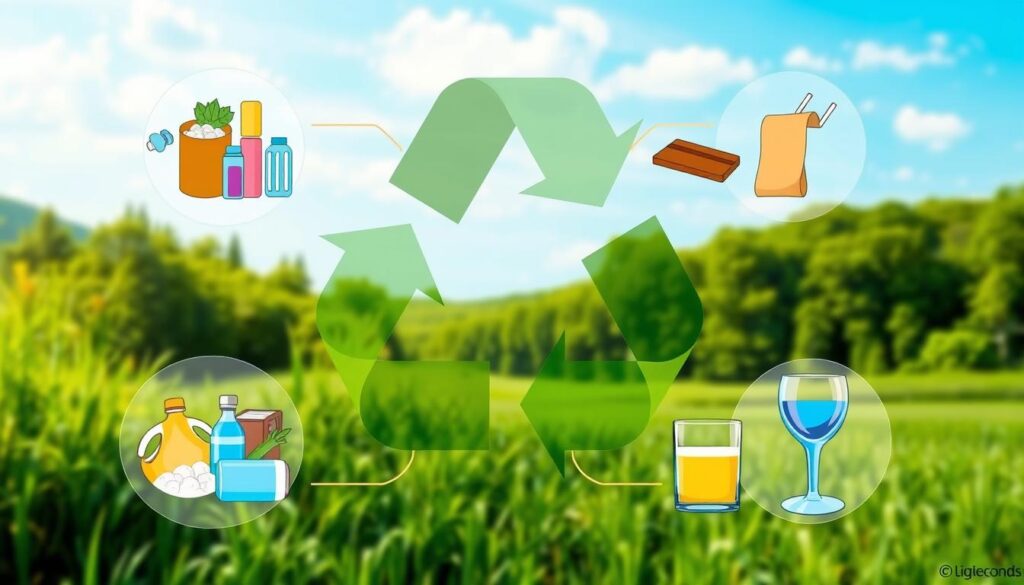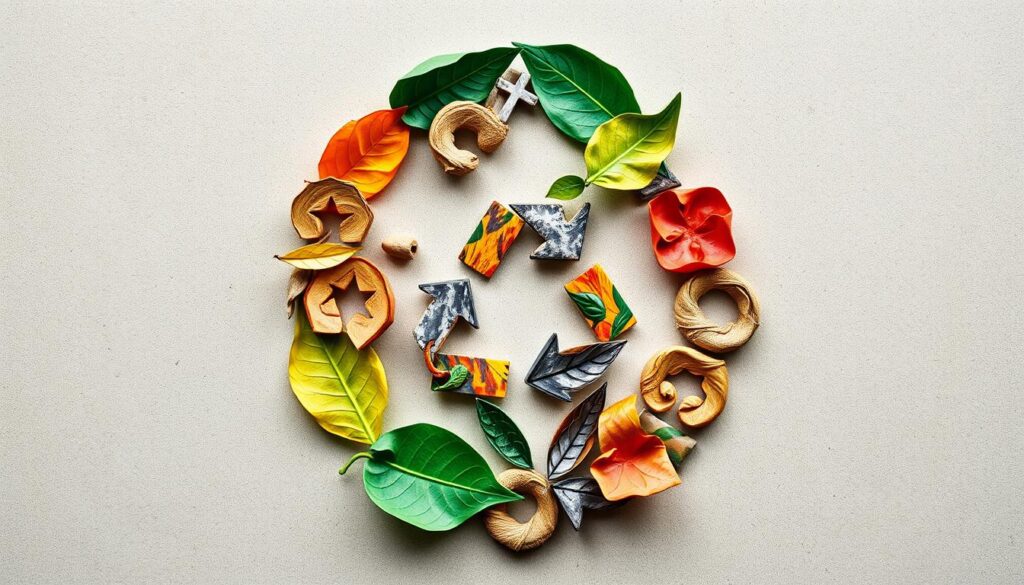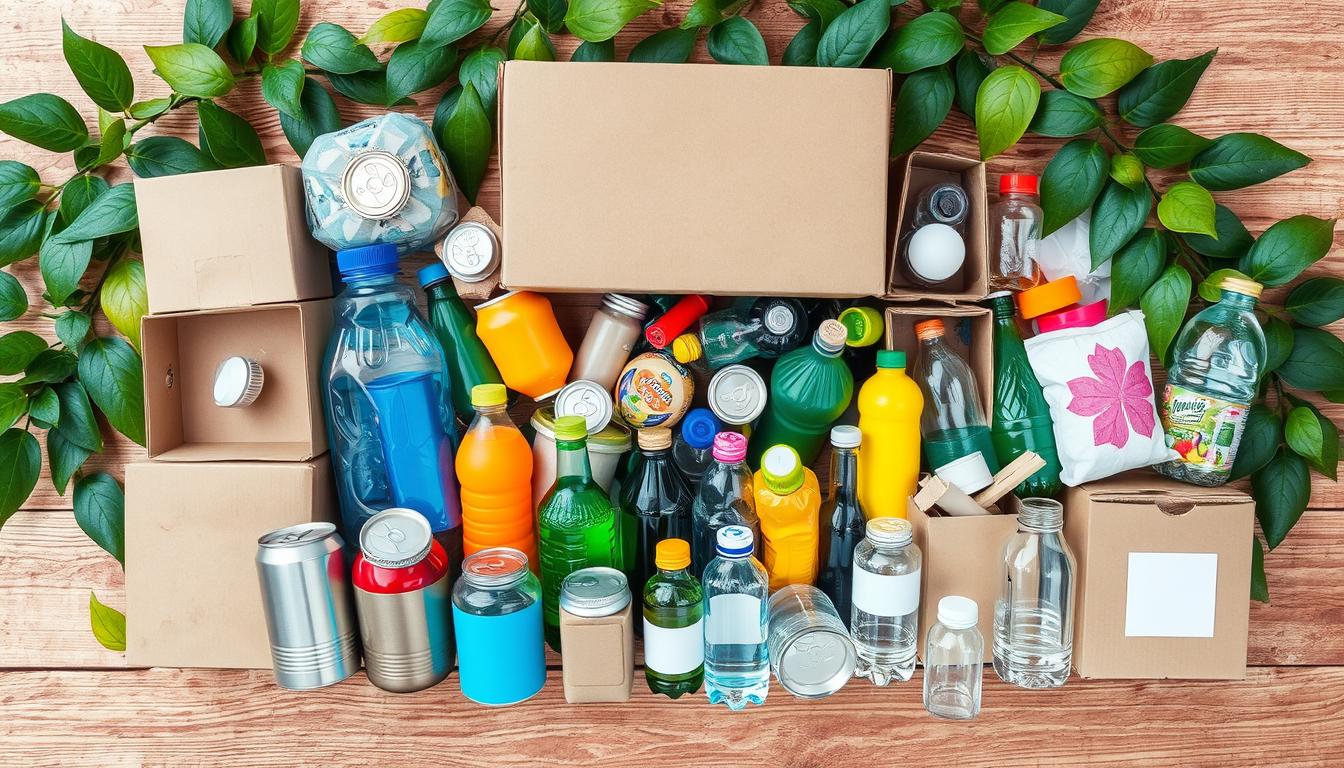Reading time: 7 minutes
Interested in what is recyclable in your home? You’re not alone. With only a 32% rate of recycling here in the United States, being aware of which items are recyclable is key to saving landfill trash and making our world safe.
This comprehensive guide contains all you need to know about what can be recycled, from household essentials to specialty items requiring special attention.
Table of Contents
Quick Answer: What Items Can Be Recycled?
Most Commonly Recyclable Items:
- Plastic bottles and containers (#1, #2, #5 plastics)
- Paper products (newspapers, magazines, office paper)
- Cardboard boxes and packaging
- Glass bottles and jars
- Aluminum cans and foil
- Steel and tin cans
- Electronics (with proper preparation)
Items That Cannot Be Recycled:
- Plastic bags (require special drop-off)
- Shredded paper
- Contaminated food containers
- Styrofoam
- Hazardous materials
Note: Recycling programs vary by location. Always check your local guidelines for specific accepted materials.
Complete List of Recyclable Materials
Paper and Cardboard Products ✅
What items can be recycled in the paper category:
- Newspapers and magazines
- Office paper and envelopes
- Cardboard boxes and packaging
- Phone books and catalogs
- Cereal boxes and food packaging
- Paper bags
- Wrapping paper (non-metallic)
Recycling Impact: Recycling one ton of paper saves 17 trees and 7,000 gallons of water. In 2022, paper recycling rates reached 67.9%, while cardboard boxes achieved an impressive 93.6% recycling rate.
Plastic Items That Can Be Recycled ♻️
Easily Recyclable Plastics (#1, #2, #5):
- Water and soda bottles
- Milk jugs
- Detergent containers
- Yogurt containers
- Plastic food containers
Special Handling Required (#3, #4, #6, #7):
- Plastic bags (#4) – take to grocery store drop-off
- Styrofoam (#6) – limited recycling options
- Mixed plastics (#7) – check local facilities
Quick Tip: Look for the recycling symbol with numbers 1, 2, or 5 for curbside recycling acceptance.
Glass and Metal Recyclables 🥫
Glass Items You Can Recycle:
- Food jars and containers
- Beverage bottles
- Cosmetic containers
- Condiment jars
Metal Items for Recycling:
- Aluminum cans and foil
- Steel food cans
- Tin containers
- Aerosol cans (empty)
Did You Know: Recycling aluminum uses 95% less energy than producing it from raw materials. A single aluminum can contains enough energy to power a TV for 3 hours.

Electronics and Specialty Items 🔋
Electronics That Can Be Recycled:
- Laptops and computers
- Cell phones and tablets
- Televisions and monitors
- Small appliances
- Batteries (all types)
- LED light bulbs
Preparation Required:
- Remove batteries from devices
- Delete personal data
- Take to certified e-waste centers
Items That Cannot Be Recycled
Understanding what items cannot be recycled is equally important for proper waste management.
Common Non-Recyclable Items ❌
| Item | Why It Can’t Be Recycled | Proper Disposal |
|---|---|---|
| Plastic bags | Jam recycling machinery | Grocery store drop-off |
| Shredded paper | Too small to sort effectively | Regular trash |
| Styrofoam | Not cost-effective to process | Regular trash |
| Pizza boxes (greasy) | Food contamination | Compost clean portions |
| Mirrors | Different glass composition | Regular trash |
| Ceramic dishes | Contaminate glass recycling | Donate or trash |
Hazardous Materials Requiring Special Handling ⚠️
Items needing specialized disposal:
- Fluorescent light bulbs (contain mercury)
- Paint and chemicals
- Motor oil and automotive fluids
- Propane tanks
- Medical waste
Always check with local hazardous waste facilities for proper disposal methods.
How to Prepare Items for Recycling
Proper preparation ensures your recyclables actually get recycled. Follow these essential steps:
Step-by-Step Recycling Preparation
- Clean containers thoroughly
- Rinse food containers
- Remove labels when possible
- Dry completely before recycling
- Prepare plastics correctly
- Keep caps on bottles
- Remove pump dispensers
- Check recycling numbers
- Handle paper materials
- Keep paper dry and clean
- Remove plastic windows from envelopes
- Flatten cardboard boxes
- Electronics preparation
- Remove batteries safely
- Delete personal information
- Separate different materials
Understanding Recycling Symbols and Codes
The Resin Identification Codes (RIC) on plastic items help determine recyclability, but they can be confusing. Here’s what you need to know:
Plastic Recycling Numbers Guide
- #1 (PET/PETE): Water bottles, soda bottles – ✅ Widely recyclable
- #2 (HDPE): Milk jugs, detergent bottles – ✅ Widely recyclable
- #3 (PVC): Pipes, credit cards – ❌ Difficult to recycle
- #4 (LDPE): Plastic bags, bread bags – ⚠️ Special drop-off required
- #5 (PP): Yogurt containers, bottle caps – ✅ Increasingly recyclable
- #6 (PS): Styrofoam, disposable cups – ❌ Limited recycling
- #7 (Other): Mixed plastics – ❌ Generally not recyclable
Important: A 2019 survey revealed that 92% of Americans misunderstand these codes. The numbers indicate plastic type, not automatic recyclability.
Finding Local Recycling Programs
Recycling rules vary significantly by location. Here’s how to find what items can be recycled in your area:
Research Your Local Program
- Check municipal websites for recycling guidelines
- Contact waste management services directly
- Use online tools like Earth911’s recycling center locator
- Attend community collection events for specialty items
Community Resources
- Electronics recycling events (often quarterly)
- Hazardous waste collection days
- Textile and clothing drives
- Battery collection programs
The Environmental Impact of Recycling
Understanding what items can be recycled helps create significant environmental benefits:
Environmental Benefits
- Reduces landfill waste by diverting millions of tons annually
- Conserves natural resources like trees, oil, and minerals
- Saves energy compared to manufacturing from raw materials
- Reduces pollution from extraction and processing
Economic Impact
Drives innovation in sustainable manufacturing processes
Creates jobs: Recycling industry employs over 750,000 Americans
Generates revenue: $117 billion annual wages in recycling sector

Frequently Asked Questions
Can pizza boxes be recycled?
Clean pizza boxes with minimal grease can often be recycled. Remove any food residue and check local guidelines, as policies vary.
What about items with recycling symbols?
Not all items with recycling symbols can go in curbside bins. The symbol indicates the material type, not automatic recyclability in your local program.
How clean do containers need to be?
Containers should be “food-clean” – rinsed free of food residue but don’t need to be spotless. A quick rinse is usually sufficient.
Can I recycle broken glass?
Broken glass should not go in regular recycling bins as it poses safety risks. Some communities have special glass recycling programs.
Free Printable Recycling Guide
Want to become a plastic recycling expert? Download our comprehensive printable guide that includes:
- Quick-reference plastic type chart
- Recyclability checklist for your area
- Preparation steps for each plastic type
- Common mistakes to avoid
This handy one-page reference can be printed and kept in your kitchen for quick decision-making.
Download Your Free Recycling GuideTake Action: Start Recycling Smarter Today
Now that you know what items can be recycled, put this knowledge into practice:
- Subscribe to our Newsletter – Receive expert tips, case studies, and exclusive content on sustainable technology and green materials
- Audit your current recycling habits – are you missing recyclable items?
- Set up proper sorting systems in your home
- Research local specialty programs for electronics and hazardous materials
- Share this knowledge with family and friends
Remember, effective recycling starts with understanding what items can be recycled in your specific location. When in doubt, contact your local recycling program for guidance.

